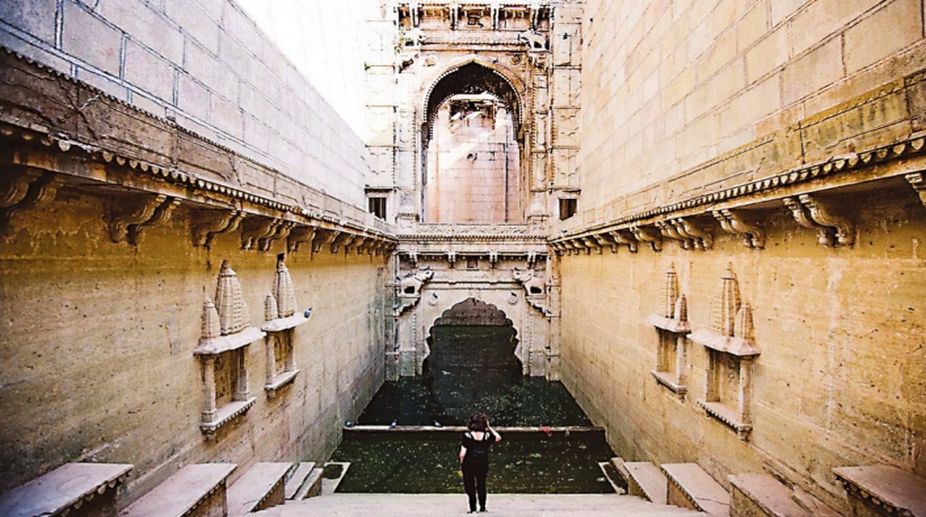Water is the elixir around which our existence centers. Its dearth and storage has always exercised the ingenuity of people, rich and mass alike. The Baolis or stepwells, in their different forms, have occupied a pivotal role in all the major communities and also remained a part of their tradition especially in rural Rajasthan.
The kund, known to collect rainwater for drinking are structures open from all sides whereas the tankas are privately owned, assiduously guarded and the baories, open to the public. The aesthetic stepwells (Baolis), Kunds and Tankas have added to the heritage value of the city Bundi.
According to an official survey there are over 387 such Baolis all over the district with the city having 21 of them. Bundi (Talera) with 37, Hindoli with 132, Keshorai Patan 65, Indergarh-Lakheri (35) and Nainwa tehsils with 97 of them. Each has its own unique design, architectural excellence, interesting tales and names associated with it. Amongst the most impressive baolis (step wells) and kunds, many are present right in the heart of the city.
The Nagar Sagar Kund is a pair of matching stepwells just outside the Chowgaan Gate in the city.
The special reservoirs are spread all over having typical names owing to the place, background, history people and even caste. One stepwell on the outskirts of the city is named after a dancer while some have very special local names like, Bheru ji ki Baori, Phooti (broken) baori, Khaari Baori, Mahadeo Baori, Purushottan Baori, Nahar Doos ki Baori etc. A Bhoot Kund can also be seen made out of un-cemented stones. Tankas are also present inside the Taragarh (Star Fort) and the Meera Sahib ki Dargah in Bundi and other hill tops for storing water within, built using silt vales made out of stones. The Dabhai Kund or the Jail Kund is the largest of the kunds in Bundi. Though slightly overgrown, it has spectacular carvings on the numerous steps leading down to the water level.
The Raniji ki Baori though not as massive in its dimensions, is extremely ornate and embellished with a rich engraving of an elephant. The delicately chiselled arches on the columns add to the grace and grandeur of the total structure which is an example of baoli architecture. Rani Nathawati had commissioned many such baolis here. Rani ji ki Baori is presently under the care of the state archeology department. Heritage promoter A.H. Zaidi say, "the number of Baories, Kunds etc could be even more. Efforts are on to include the baolis /stepwells in the UNESCO World Heritage site list along with Abhaneri and Bandikui stepwells".
Stepwells have maintained the religious tradition of placing idols of gods and goddesses on either side. In the past, the only source of drinking water was the tanks, lakes and stepwells or wells.
Women carrying pots on their heads used to travel up to these wells in their colorful dresses, singing folk songs which brought these monuments to life. Providing water to the thirsty is considered a yeoman service and this has been depicted symbolically in the sculptures in the Raniji-ki-Baori, where a woman is shown pouring water from the pitcher.
Gulla-ki-baori or Gulabbaori at the Nahar ka Chohta area is also famous for its crystal clear water. Most of the baolis unfortunately need immediate attention and a few look as dry as Delhi around Gandhi Jayanti. Some of them have been ruthlessly and illegally trespassed and a few have fallen victim to the ravages of time .Some efforts are on to clean the existing kunds, baoris before the onset of the monsoons by the students , NGOs and their likes in the form of a ‘Shramdaan’. Some consciousness through works like ‘Amritam Jalam’ is proving useful in cleansing the monument. The revival, restoration and beautification of these pliant summer quenchers could surely make the little township much more than just a City of Stepwells.






